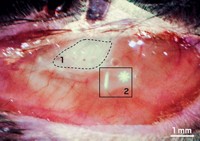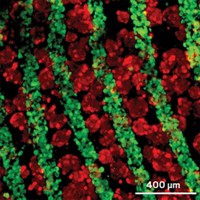Advertisement
Grab your lab coat. Let's get started
Welcome!
Welcome!
Create an account below to get 6 C&EN articles per month, receive newsletters and more - all free.
It seems this is your first time logging in online. Please enter the following information to continue.
As an ACS member you automatically get access to this site. All we need is few more details to create your reading experience.
Not you? Sign in with a different account.
Not you? Sign in with a different account.
ERROR 1
ERROR 1
ERROR 2
ERROR 2
ERROR 2
ERROR 2
ERROR 2
Password and Confirm password must match.
If you have an ACS member number, please enter it here so we can link this account to your membership. (optional)
ERROR 2
ACS values your privacy. By submitting your information, you are gaining access to C&EN and subscribing to our weekly newsletter. We use the information you provide to make your reading experience better, and we will never sell your data to third party members.
Biological Chemistry
Making bone transparent
Researchers adapt tissue-clarifying technique to clear minerals from bone too
by Elizabeth K. Wilson
June 27, 2017
| A version of this story appeared in
Volume 95, Issue 18

Scientists have developed a biochemical process that renders bones transparent and then used it to visualize the bone-cell-proliferating action of a new osteoporosis drug (Sci. Transl. Med. 2017, DOI: 10.1126/scitranslmed.aah6518). In addition to enabling the study of drug effects on bone cells, the feat could provide an unprecedented view of the processes in bone cell growth and death.
The team, led by Caltech biology and biological engineering professor Viviana Gradinaru, based its bone-clearing strategy on a soft-tissue-clarifying method, called Clarity, that Gradinaru helped develop as a postdoc in Karl Deisseroth’s lab at Stanford University.
In recent years, numerous scientists have made significant progress in being able to remove light-scattering lipids from brains and other soft-tissue constructs. The ability to visualize clear, intact soft tissue has great advantages over examining tissue slices because the structures and cells within remain connected and undisturbed.
Bones, however, have been tougher to render transparent than soft tissues because they are impregnated with minerals, which are difficult to wash away while maintaining bone structure.
To clear the calcium from bones, Gradinaru’s lab used ethylenediaminetetraacetic acid (EDTA). Then, as in the original version of Clarity, the researchers infused the bone with acrylamide monomers to form a stabilizing hydrogel mesh and finally washed out lipids with a detergent.
To see cells inside the transparent bone, the group genetically engineered mice so that their bone stem cells, known as osteoprogenitors, glowed red. Drug company Amgen provided the team with a new osteoporosis drug to investigate. Gradinaru’s team compared the bones of mice who had received the drug with those who hadn’t. The researchers saw a clear proliferation of osteoprogenitors in the vertebrae of mice who had been given the drug.
Sean Morrison, director of the Children’s Medical Center Research Institute at the University of Texas Southwestern says “improving our understanding of the localization of osteoprogenitors in the bone marrow is an important goal that will enhance our understanding of the mechanisms that regulate the maintenance of the adult skeleton.”





Join the conversation
Contact the reporter
Submit a Letter to the Editor for publication
Engage with us on Twitter